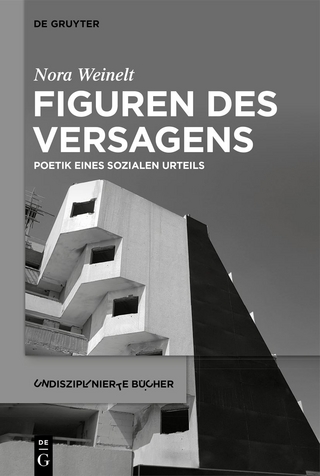
Language Change in Real- and Apparent-Time
Routledge (Verlag)
978-1-032-21216-6 (ISBN)
This book makes the case for the value of a combined panel and trend study approach in studying real- and apparent-time language change to reconcile conspicuous disparities between the individual and the community. Through an examination of the Swabian dialect in southwestern Germany in two speech communities over four decades, this volume resolves critical methodological challenges in investigating lifespan and community change. This work affirms the importance of the speech community in shaping change and demonstrating how speakers’ notions of local identity and community belonging inform their choice of linguistic variants.
Drawing on a comprehensive, integrated methodology, this research brings together diverse approaches for measuring changing social constructs and analyzing linguistic structures using state-of-the-art statistical methods bolstered by participant-observer and ethnographic observations. Beaman explores indexicalities of identity, accommodation, and geographic mobility to investigate how predictable sociolinguistic patterns promote variation and influence language change. Empirically, this volume documents processes of dialect leveling and supraregionalization and the emergence of a “Swabian Renaissance” among younger, well-educated urban speakers who leverage the social indexical status of certain linguistic variables to convey social meanings of local prestige and community belonging. Methodologically, this book offers best practices from a combined panel and trend study, demonstrating the compatibility and complementarity of real- and apparent-time analyses in uncovering the nature, rate, and dispersion of linguistic change. Theoretically, this work links intraspeaker lifespan change and interspeaker community change into a holistic approach, pushing forward our understanding of the role that “orderly heterogeneity” plays in language variation and change.
This book will be of interest to students and scholars in sociolinguistics, linguistic anthropology, dialectology, and historical linguistics.
Karen V. Beaman is a lecturer of sociolinguistics at the University of Tübingen, Germany. Her primary research is a comparative study of Swabian, a dialect spoken in southwestern Germany, which combines a 35-year panel study with a five-generation trend study. Her work investigates language variation and change in both real- and apparent-time, with particular focus on how factors of identity, mobility, and social networks drive or inhibit change.
Contents
List of figures
List of tables
Acknowledgments
Symbols and conventions
Codes and abbreviations
CHAPTER 1. INTRODUCTION TO LIFESPAN AND COMMUNITY CHANGE
1.1. Introduction
1.2. Challenges to the critical-period hypothesis
1.3. Approaches to studying language change
1.4. Individual and community patterns of linguistic change
1.5. Theoretical underpinnings and methodological framework for this book
1.6. Structure and contributions of this book
CHAPTER 2. METHODS FOR THE STUDY OF REAL- AND APPARENT-TIME LANGUAGE CHANGE
2.1. Introduction
2.2. The Swabian language and people
2.3. The corpus
2.4. Data collection and preparation
2.4.1 Step 1: Sample selection
2.4.2 Step 2: Sociolinguistic interview
2.4.3 Step 3: Recording
2.4.4 Step 4: Transcription
2.4.5 Step 5: Validation
2.4.6 Step 6: Annotation
2.5. The linguistic variable(s)
2.5.1 Phonological variables
2.5.1 Morphosyntactic variables
2.6. Measuring dialect density
2.7. Socio-demographic factors of language change
2.7.1 Speaker community
2.7.2 Speaker gender
2.7.3 Speaker age
2.7.4 Speaker education
2.7.5 Speaker social class
2.8. Change in real- and apparent-time
2.9. Change across the lifespan
2.10. Individual and community change
2.11. Summary
CHAPTER 3. THE SPEECH COMMUNITY AND URBAN–RURAL DIVIDE
3.1. Introduction
3.2. Speech communities
3.2.1 Stuttgart
3.2.2 Schwäbisch Gmünd
3.3. Urbanity and rurality
3.3.1 Regionality and dialect use
3.3.2 Community differences over time
3.3.3 The impact of higher education
3.4. The role of social networks
3.5. Coherence in the speech community
3.5.1 Covariation analysis
3.5.2 Measuring community coherence
3.5.3 Variable weightings
3.6. Summary
CHAPTER 4. DIALECT CONTACT, LEVELING AND SUPRAREGIONALIZATION
4.1. Introduction
4.2. Dialect contact and leveling
4.3. Rise of supralocal and supraregional varieties
4.4. Standard language convergence
4.5. Dialect levelling in Swabia
4.5.1 Frequency distributional analysis
4.5.2 Lifespan and community change
4.5.3 Interactions between the linguistic and social
4.6. Indexicalities of linguistic variables
4.6.1 Variable family
4.6.2 Variable salience
4.6.3 Variable stigma
4.6.4 Variable status
4.7. Supraregionalization in Swabia
4.8. Summary
CHAPTER 5. INDEXICALITIES OF IDENTITY, ACCOMMODATION, AND MOBILITY
5.1. Introduction
5.2. Linguistic accommodation
5.3. Local orientation and identity construction
5.4. Perpetual mobility and humanity
5.5. Cultural indices as indicators of dialect use
5.5.1 Local orientation
5.5.2 Interlocutor accommodation
5.5.3 Speaker mobility
5.6. Multivariate analysis
5.7. Summary
CHAPTER 6. LIFESPAN AND COMMUNITY CHANGE ACROSS THE LINGUISTIC ARCHITECTURE
6.1. Introduction
6.2. (ai) diphthong
6.2.1 Background
6.2.2 Measuring diphthong trajectories
6.2.3 Diphthong change in real- and apparent-time
6.2.4 Local orientation and loss of diphthong contrast
6.2.5 Internal linguistic factors and diphthong change
6.2.6 The interaction of the linguistic and social
6.2.7 Discussion
6.3. wo-relatives
6.3.1 Background
6.3.2 The Linguistic variable and the envelope of variation
6.3.3 Frequency distribution of wo-relatives
6.3.4 Multivariate analysis of wo-relatives
6.3.5 Discussion
6.4. Summary
CHAPTER 7. CONCLUSIONS AND LOOKING FORWARD
7.1. Introduction
7.2. Compatibility of combined panel and trend studies
7.3. Dialect leveling and supraregionalization in Swabian
7.4. Indexicalities and social meaning
7.5. Methodological and theoretical contributions to the field of sociolinguistics
7.6. Opportunities for future research
7.7. Summary
Appendices
Appendix A: Interview documents
Appendix B: Data transcription conventions
Appendix C: E2R data extraction and annotation process
Appendix D: Swabian-German Lexicon
References
Index
| Erscheinungsdatum | 29.03.2024 |
|---|---|
| Reihe/Serie | Routledge Studies in Language Change |
| Zusatzinfo | 58 Tables, black and white; 92 Line drawings, black and white; 92 Illustrations, black and white |
| Verlagsort | London |
| Sprache | englisch |
| Maße | 152 x 229 mm |
| Gewicht | 775 g |
| Themenwelt | Geisteswissenschaften ► Sprach- / Literaturwissenschaft ► Anglistik / Amerikanistik |
| Geisteswissenschaften ► Sprach- / Literaturwissenschaft ► Literaturwissenschaft | |
| Geisteswissenschaften ► Sprach- / Literaturwissenschaft ► Sprachwissenschaft | |
| ISBN-10 | 1-032-21216-0 / 1032212160 |
| ISBN-13 | 978-1-032-21216-6 / 9781032212166 |
| Zustand | Neuware |
| Informationen gemäß Produktsicherheitsverordnung (GPSR) | |
| Haben Sie eine Frage zum Produkt? |
aus dem Bereich


